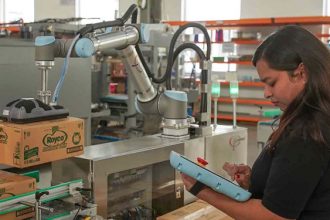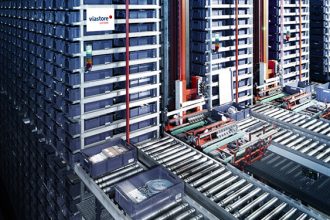Metrics Often Overlooked When Calculating AS/RS ROI Explored In ASRS’ MODEX 2020 Education Session

At MODEX 2020, held this past March in Atlanta, members of the ASRS industry group of MHI presented a free, on-floor seminar to attendees. Entitled “How to Calculate AS/RS ROI: Key Metrics That Often Get Overlooked,” the 30-minute session’s slides and audio were recorded for those who were unable to attend, or who wish to view the presentation a second time.
The session first helps those interested in investing in automated storage and retrieval systems (AS/RS) build the financial case for doing so. Common justification points include:
- Direct and indirect labor savings
- Optimized worker ergonomics
- Increased worker safety
- Improved organization
- Better, more accurate order fulfillment rates
- Reduced storage footprint
- Energy savings
- Reduction in downtime
- Elimination of physical inventory counts
- Lost prevention
The session then discusses how to determine how much automation should be implemented in a given application, recommending that potential AS/RS buyers work with suppliers to determine the optimal solution (or mix of solutions).
Also reviewed are the potential advantages and disadvantages of installing an AS/RS in an existing, brownfield facility (same geographic footprint, knowledge of existing labor market, and shorter installation timeline are among the benefits; challenges include building columns and obstructions, irregular shaped floors and sloped surfaces, and disruption of current operations). Those factors are compared to the pros and cons of situating an AS/RS in a new, greenfield facility (benefits include the ability to build the facility in an optimal geographic location, reduction in footprint limitations, and flexible layout options, versus challenges such as a higher overall cost, longer realization timeline, and learning the intricacies of a new location, such as the labor market and transportation options).
The session further presents the lesser known, yet still impactful, factors that can be applied when calculating anticipated ROI on an AS/RS investment. These include a reduction in insurance claims associated with ergonomic injuries, faster onboarding of workers (both permanent and temporary), security of product against damage or theft, the ability to maximize the overhead space within the facility, better inventory visibility, and increased sustainability through a reduction in energy usage.
Finally, the presentation walks participants through a five-step process to build a cost justification model, and shares sample calculations to visually explain how to use the framework when calculating ROI. The steps include:
- Define the cost of a conventional system as a benchmark to compare against the cost of an automated system
- Find the cost of capital, income tax rate, inflation for equipment and labor costs
- Define operating costs for both the benchmark and the automated systems
- Project investments and operating costs for 20 years (using inflation assumptions)
- Perform discounted cash flow based on the internal rate of return (IRR) of the investment and net present value (NPV) calculation
Want to learn more about AS/RS and ROI? The ASRS industry group offers a variety of information and resources, here.



